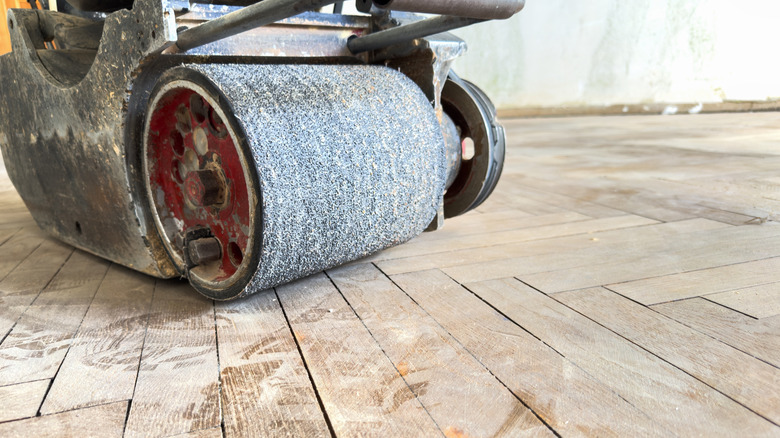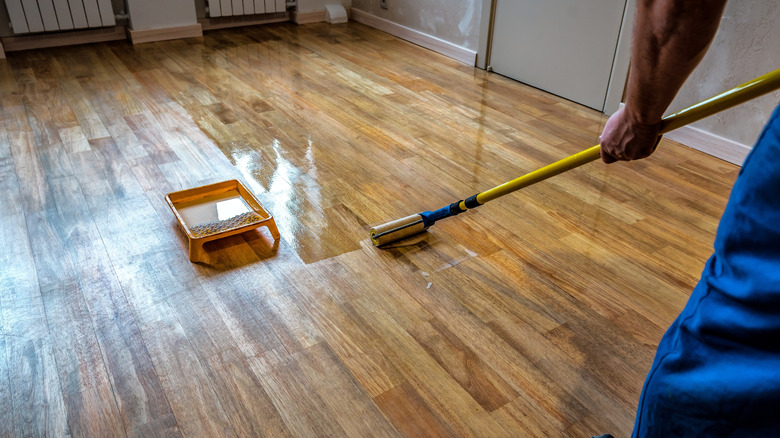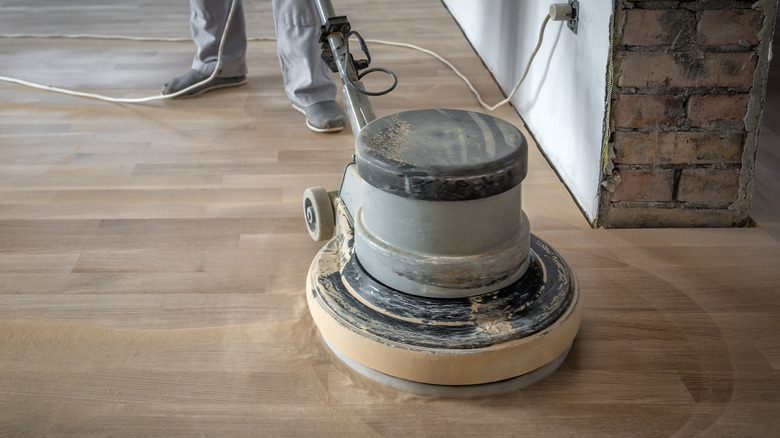Hardwood Floor Restoration Vs Refinishing: How To Determine What You Need
If your hardwood floors were installed quite some time ago and have undergone lots of wear and tear over the years, it might be time to spruce them up. This can get confusing if you don't know whether you need to restore or refinish the flooring material. Thankfully, Brett Miller, the Vice President of Technical Standards, Education, & Membership at the National Wood Flooring Association (NWFA), explained how to determine which option is best for you. While speaking exclusively to House Digest, the expert shared that if you want the floor to look nearly as good as new, you'll need to refinish it. Otherwise, restoration is typically the way to go.
"Every floor, and every customer's expectations are different," Miller explained. "A maintenance coat restores sheen on the surface of the floor, but will not address any scratches, dents, or heavy wear and tear. Where a maintenance coat is not appropriate, the floor must be completely refinished." According to the expert, refinishing a hardwood floor consists of resanding the surface down to raw wood to get it back to a like-new condition. Let's dive further into everything Miller had to say.
The pros and cons of both options
Evaluating the pros and cons of restoring or refinishing a classic hardwood floor will help you make the right decision. The perks of restoring a hardwood floor (which Miller refers to as applying a maintenance coat), are rather impressive. "The benefits of a maintenance coat include prolonging the life of the floor, restoring its original luster, and it can often be completed within a day or two," the expert explained while speaking exclusively to House Digest.
The cons have to do with the floor's condition and what chemicals were used on it previously. "Several cleaning products that are commonly used on wood floors can leave behind a film or residue that can adversely interfere with the adhesion of a new coat, ultimately resulting in finish peeling from the floor (similar to a bad sunburn)," Miller shared. He explained that the NWFA advises you to only use hardwood floor cleaning products recommended by professionals. The final con of restoration the expert revealed is that you must clear the floor and remove all furniture, rugs, etc.
Miller went on to detail the pros of refinishing wood flooring. "The benefits of refinishing a wood floor include making the floor look brand new again while also giving the customer the option of changing the color of the floor," he explained. Watch out for the cons, too. "The challenges with refinishing a wood floor are primarily based on whether the floor is able to be refinished or not," Miller revealed. He shared that the NWFA recommends a floor wear layer of 3/32 inch or 2.5 millimeters in order to complete a refinishing project safely.
The different processes used to revitalize a hardwood floor
While speaking exclusively to House Digest, Miller explained the different processes used to revive a hardwood floor. This information can also help you request the right services based on your specific needs. "In the wood flooring industry, we typically refer to the process of recoating a previously coated wood floor as a 'maintenance coat' or a 'screen and coat,'" the expert shared. "This process normally involves first testing the existing surface for potential contaminates that could interfere with new finish adhesion, then a deep cleaning of the floor before preparing the floor for a new topcoat."
Alternatively, you might choose to have your hardwood floors resanded. "Resanding is a more involved process which involves sanding down to raw wood, and requires multiple coats of finish to be applied to the surface," Miller explained. As for the cost of these services, expect them to vary depending on pricing set by your local contractors and other factors specific to you. The expert did confirm that having your hardwood floors refinished will be pricier than having a maintenance coat applied. Keep this in mind to help plan budgeting for your project.


